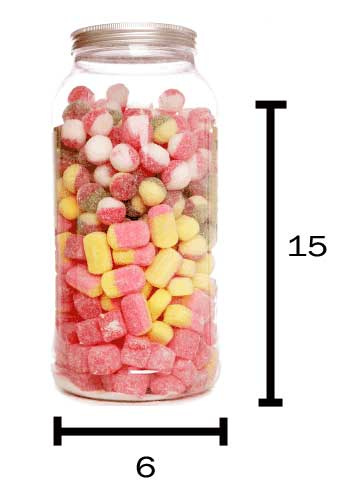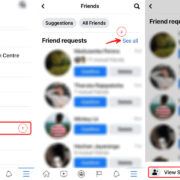Estimating the number of candies in a jar is a classic challenge often encountered at fairs, classrooms, and parties. It may seem like it relies solely on wild guesses, but in reality, there’s a bit of science and math involved. With the right approach, you can come surprisingly close to the actual number. This task becomes easier with a “candies in a jar calculator,” a tool or method designed to turn the guesswork into an educated estimate. In this guide, you’ll learn various ways to make accurate guesses using simple tools and calculations.

Volume Calculation
Before any candies are touched, start with a mathematical approach using volume. This method hinges on understanding the jar’s total volume and the volume of a single candy.
Detailed Steps:
- Measure the volume of the jar. Fill it with water, then pour the water into a measuring jug to determine the volume in milliliters or fluid ounces.
- Find the volume of one candy by submerging it in a graduated cylinder partially filled with water and noting the water level rise.
- Divide the jar’s volume by the volume of one candy to get an estimate of how many candies fit in the jar.
- Adjust this number considering that there are gaps between candies. A common adjustment is a reduction by 20-25% to account for air spaces.
Summary:
This method offers a mathematical approach that can be fairly accurate, but it assumes all candies are the same size and shape. Volume discrepancies and the air space adjustment factor can vary, leading to potential inaccuracies.
Counting Layers
Another method involves counting how many candies fit in one layer at the bottom of the jar and estimating how many such layers stack up to the top.
Detailed Steps:
- Lay out a single layer of candies at the bottom of the jar and count them.
- Estimate how many layers of candies would fit up to the top.
- Multiply the number of candies in one layer by the number of layers to estimate the total count.
- Again, adjust for gaps between candies as they stack in non-uniform layers.
Summary:
Counting layers is simpler but assumes uniform layers, which is rarely the case. It’s useful for quick estimates but can be off by a considerable margin due to irregular stacking.
Average Weight
Candies can also be counted by using their average weight. This method is good for candies that are fairly uniform in size.
Detailed Steps:
- Weigh a sample quantity of candies to find the average weight of one candy.
- Weigh the jar full of candies, and subtract the weight of the empty jar.
- Divide the net weight of candies by the average weight of one candy.
- Apply a small adjustment if necessary for any packing inefficiencies.
Summary:
The weight method can be precise for candies of uniform size and weight, but variations in candy weight or jar weighing accuracy can introduce error margins.
Statistical Sampling
Statistical sampling is effective when dealing with a very large jar of candies.
Detailed Steps:
- Randomly select a small, manageable number of candies from the jar.
- Count the candies in this sample and measure the volume they occupy.
- Scale up this number proportionally to the volume of the entire jar.
- Make adjustments based on the observed packing density in the sample.
Summary:
Sampling provides a reasonable estimate and helps manage large quantities, though it may not account for variations deeper within the jar.
Geometric Estimation
This technique uses geometry for regular-shaped candies like spheres or cubes.
Detailed Steps:
- Determine the geometric formula for the volume of one candy (e.g., V=s^3 for cubes, where s is the length of a side).
- Calculate the volume of a single candy using its dimensions.
- Follow similar steps as the volume calculation method to find the total number of candies.
Summary:
Geometric estimation is precise for uniform, regularly-shaped candies but does not work well with irregular shapes or mixed sizes.
Density and Packing Efficiency
Certain candies might have a known packing efficiency or density that can be used for calculation.
Detailed Steps:
- Research or experimentally determine the packing efficiency for the type of candy.
- Apply this efficiency percentage to the volume-based method.
- Use this refined number to estimate the candy count.
Summary:
Density and packing efficiency can give a sophisticated estimate but require specific data that might not be readily available for every type of candy.
Mobile Apps
Technology offers handy apps designed for counting objects in images.
Detailed Steps:
- Download a counting app compatible with your smartphone.
- Take a clear photo of the jar with candies.
- Follow the app instructions to get an estimate.
Summary:
Mobile apps are user-friendly and quick but vary in accuracy based on picture quality and app algorithms.
Online Calculators
Many websites offer calculators for estimating candies in a jar based on input dimensions and candy size.
Detailed Steps:
- Find an online candies in a jar calculator.
- Input the required measurements as prompted.
- The calculator will provide an estimate based on the entered data.
Summary:
Online calculators are convenient, though their accuracy is dependent on the user’s input precision.
Jar Comparison
If you have access to jars of known candy counts, you can use them for comparison.
Detailed Steps:
- Compare the unknown jar to a known jar of similar size and shape.
- Use the count from the known jar as a reference point, adjusting based on visible differences.
Summary:
Comparison can offer a quick ballpark figure but assumes that the jars have similar packing efficiencies.
Educated Guesswork
Sometimes, nothing beats a good old-fashioned educated guess, especially when other methods aren’t available.
Detailed Steps:
- Observe the jar, considering candy size and jar volume.
- Based on your experience, make an educated guess.
- You can average your guess with others’ to get a crowd-sourced estimate.
Summary:
While not scientific, this method leverages human intuition and can be surprisingly effective, though it’s highly subjective.
In conclusion, while there’s no foolproof method to precisely determine the number of candies in a jar, the aforementioned strategies can significantly improve the accuracy of your estimates. Whether through mathematical calculations, sampling, or app-based technology, you can transform a random guess into an educated one, making the entire process both fun and informative.
FAQs
-
Can I use these methods for jars with mixed candy sizes?
Yes, but the estimates will be less precise. It’s best to use methods that allow for adjustments or provide a range. -
How do I account for irregularly shaped candies?
For irregular shapes, the volume calculation with an adjustment for air space or density can be your best bet. Alternatively, statistical sampling can average out inconsistencies. -
Why do I need to adjust for air space between candies?
Candies don’t pack perfectly; the gaps between them can occupy a significant portion of the jar’s volume, hence the need for an adjustment factor.








